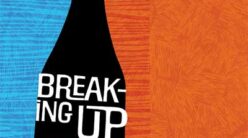 No one wants to eat toxins, chemicals, and pesticides. But no one wants to throw down extra money at the grocery checkout either. So, of course, the idea of eating organic food is appealing, but the price tag isn’t. If you can’t afford the organic option every time, follow these guidelines to know when to upgrade.
No one wants to eat toxins, chemicals, and pesticides. But no one wants to throw down extra money at the grocery checkout either. So, of course, the idea of eating organic food is appealing, but the price tag isn’t. If you can’t afford the organic option every time, follow these guidelines to know when to upgrade.
When choosing produce, keep in mind “The Dirty Dozen and “The Clean 15.” Compiled using data from the United States Department of Agriculture, these lists report the amount of pesticide residue found in non-organic fruits and vegetables after they had been washed.
The Dirty Dozen
If you choose only to buy a few organic produce items, be sure these are the ones. They carry the heaviest load of chemicals and pesticides that aren’t removed even after being washed.
1. Celery
2. Peaches
3. Strawberries
4. Apples
5. Blueberries
6. Nectarines
7. Bell Peppers
8. Spinach
9. Kale/Collard Greens
10. Cherries
11. Potatoes
12. Grapes (Imported)
The Clean 15
These items bear little or no trace of pesticides, and they are safe to consume in non-organic form.
1. Onions
2. Avocado
3. Sweet Corn
4. Pineapple
5. Mangos
6. Sweet Peas
7. Asparagus
8. Kiwi
9. Cabbage
10. Eggplant
11. Cantaloupe
12. Watermelon
13. Grapefruit
14. Sweet Potato
15. Honeydew Melon







1 thought on “When to Buy Organic: The Dirty Dozen and the Clean 15”
Tweets that mention When to Buy Organic: The Dirty Dozen and the Clean 15 : Diet & cooking - Web Extras - Vibrant Life Website -- Topsy.com
(August 3, 2010 - 9:48 am)[…] This post was mentioned on Twitter by Harvey Alferez and Elizabeth Vargas, Review and Herald. Review and Herald said: When to Buy Organic: The Dirty Dozen and the Clean 15 and why it matters for your health. A Vibrant Life web extra http://bit.ly/bMrbZr […]
Comments are closed.